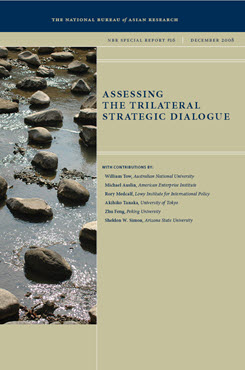Trilateral Strategic Dialogue
a Japanese Perspective
This essay examines the criteria Australia uses in deciding whether to pursue minilateral security dialogue arrangements in the Asia-Pacific region, applied to the Trilateral Strategic Dialogue (TSD) and the short-lived quadrilateral dialogue.
EXECUTIVE SUMMARY
This essay examines the criteria Australia uses in deciding whether to pursue minilateral security dialogue arrangements in the Asia-Pacific region, applied to the Trilateral Strategic Dialogue (TSD) and the short-lived quadrilateral dialogue.
MAIN ARGUMENT
Australia’s deepening role in the TSD with the U.S. and Japan, and its flirtation with a quadrilateral dialogue involving India, can be explained according to a set of national-interest criteria that include, but go beyond, a soft balancing of Chinese influence. These include a wish to help socialize Japan as an active regional security provider, an imperative to keep U.S. attention focused on the region, and a concern to ensure a continued major place for Australia in the system of U.S. alliances and partnerships.
POLICY IMPLICATIONS
- Australia will benefit from sustaining and deepening the TSD, while using its new strategic dialogue with China to help moderate any Chinese perceptions of the TSD as a threat.
- The experiment of the quadrilateral dialogue suggests that Asia-Pacific countries should make a greater effort to identify areas for security dialogue and cooperation where shared values are not a prerequisite for progress.
- At the same time, Australia cannot assume that its distancing itself from the quadrilateral dialogue will end the trend of connecting the spokes among U.S. allies and partners: Canberra will need to be mindful of potentially being excluded from a continuation of that process, for instance through growing Japan-India ties.


